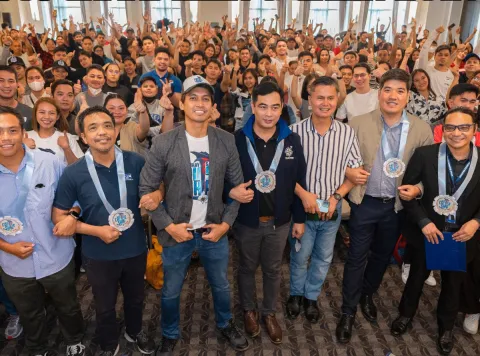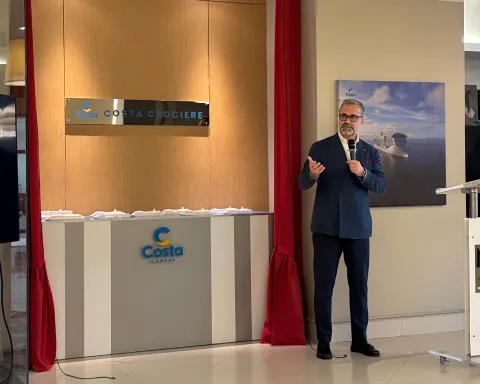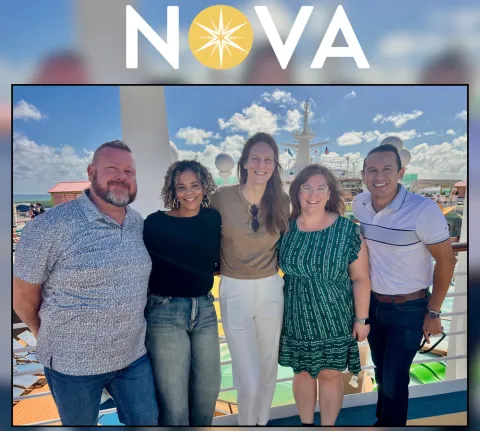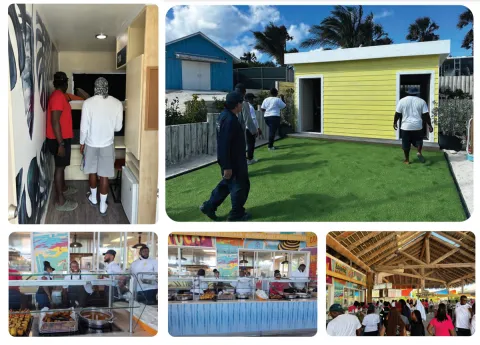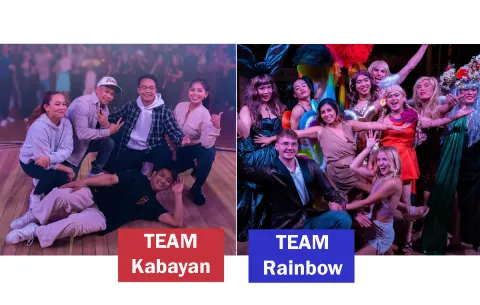
By Robbie Titchener
My work on cruise ship started On 14 January 2013. I joined P&O to work on the Cruise Ship mv Ventura. As is standard practice on P&O ships, I immediately had to attend a Safety Induction. During that Induction, the importance of our role as Crew was highlighted when we were told about the Costa Concordia disaster which had happened overnight, resulting in the loss of 32 lives.
Although all the information was still to come in at this early stage, early reports indicated that one of the contributing factors for the loss of life was the lack of a passengers safety drill before sailing. These passenger musters and crew safety drills are an integral part of P&O Cruises and, fortunately, in my 13 months on board ship, one which I never had to put into practice in real life.
I originally wanted to work on a cruise ship five years ago when I first got a job as a Photo Lab printer in New Zealand. The person I was replacing in the job had got a position on a cruise ship and it was her stories that first inspired me. Over the course of the next four years, I would update and resubmit my CV to different organisations until finally, in March last year, I received an email wanting to arrange an interview. At first I was a bit dubious (there are a lot of scams out there), but I checked out the company and yes, it was genuine.
After the first interview (via Skype – they were based in Southampton, England), they confirmed that they wanted me as an on-board Printer and then I had two months to organise all the paperwork necessary. This included an American C1-D visa, medicals, getting a Seaman’s Discharge book (which records all the coming and goings of a ship’s crew) and, of course, flights.
My first ship was the mv Aurora, which I joined in Southampton on May 18, last year. At 76,000 gross tons capable of holding 1800 passengers and 900 crew, and with it’s layered stern, Aurora is a beautiful mid-sized family ship. My second ship was mv Ventura, which at 116,000 gross tons (3000 passengers and 1200 crew), is one of the largest cruise ships serving the British market. (Compare these to the Titanic which was the largest liner in the world in 1912, at 46,000 tons and 2200 passengers and crew, and the Allure of the Seas which is the largest liner afloat today at 225,000 tons and capable of holding 6000 passengers and over 2000 crew.)
Although my main role on ship was as the Printer, as part of the Photography team I was also expected to take photos of passengers (on formal nights and at each of the ports we visited, for example) and serve in the Photo Gallery. The Photographers (or ‘Togs’) are part of the Commercial team which also includes the Shops, Spa and Casino. Other departments on ship are the Hotel (cabin stewards and general accommodation), Entertainment (including production crew), Food and Beverage (bars, waiters and chefs), and the Engineering, Deck and Bridge crew who do all the day-to-day tasks of keeping the ship operational.
Time on ship, for the crew at least, is divided into three days; sea days, port days and turnaround. On sea days it is not unusual to work up to a maximum of 13-14 hours (depending on your role). On port days, most commercial departments are closed while in port due to laws restricting the sale of goods in territorial waters, only opening after sailing. This means that, unless you are rostered onto the ship for In-Port Manning, a maritime safety requirement, you can usually get off and explore. The third day is Turnaround at the ship’s home port, the end of one cruise and the start of the next. In my two contracts totalling 13 months, I had only two full days off, and a ‘normal’ working week would be between 50 and 80 hours.
The accommodation and facilities on most cruise ships rate with the best hotels. Cabins range from internal (windowless) bunkbeds to balcony suites, and there is a range of restaurants, gyms, pools and theatres to suit every taste. The ease and comfort of travel makes the cruising lifestyle an addictive one for passengers, and the fact that you can choose whether or not you get off in a port, gives the passenger more control over their holiday. A last advantage is that, having experienced a location, passengers can then choose whether they go back for an extended holiday at a later date.
Most ships will also include a crew gym, recreational area and crew mess. There are some restrictions for crew though; a curfew, a dress-code when on passenger decks, and passengers get priority on seating in restaurants and theatres, even on the rare occasions when you have a night off. The work is long and hard, but the perks are the free travel and food and accommodation. You go to sleep in Venice and wake up in Dubrovnik. Most of our cruises were in the Mediterranean, around Norway or, during the Northern Hemisphere winter season, around the Caribbean. Being from the other side of the world, I made sure I got off and explored as much as possible. As an added extra, I also tried to get myself on passenger tours as an Escort. This did involve reporting back to the on-ship Shore Excursions team, and taking stills and videos as part of my Photographic team duties, but it meant I got to experience more than what was in the immediate port vicinity.
Two of my favourite countries that I visited regularly are Croatia and Norway. I always found Croatia stunning, with walking the old city walls of Dubrovnik barefoot a particular highlight. In Norway, passengers would often ask me if it reminded me of home. The fjords are a lot more spectacular and majestic, but yes, the scenery, the friendliness and laid-back atmosphere are very similar to New Zealand. One unfortunate memory though is being there just after the massacre last year and feeling the shock and sadness still in the air. It was a tragedy that this beautiful country and these wonderful people did not deserve.
Other highlights include: exploring the history of Rome, Athens and Florence/Pisa; the diversity and sheer difference of a Black Sea cruise (Istanbul, Romania and Ukraine); the beauty of Lisbon, Quebec, Cephalonia and Ny Alesund – a Norwegian Arctic research station just 1200km south of the North Pole; experiencing the midnight sun on an over-nighter in Reykjavik; going on a submarine dive and snorkelling with turtles in Barbados; watching the Rugby World Cup final live while in Corfu (with a majority of the crew not supporting the All Blacks); and the poignancy of visiting Flander’s Fields in Belgium and a sunset sail-past of the Dardenelles.
But all these experiences would be nothing without the great people I met and shared them with; my workmates and crewmates. On both Aurora and Ventura I was one of only a handful of Kiwis on ship and, more often than not, the only foreigner on an otherwise all-British photography team. This did mean that I had to train them in the Kiwi vernacular, but most of them were quick learners and, in return, I learnt a lot about photography.
Two of my main aims in joining a cruise ship were to travel to foreign and exotic locations and to improve my photography, and in both of those, I certainly succeeded. I did things and went places I would never have had the chance to have done otherwise. I made friends for life and as an OE, a working holiday, or even as a holiday choice by itself, I would highly recommend the cruising lifestyle.






